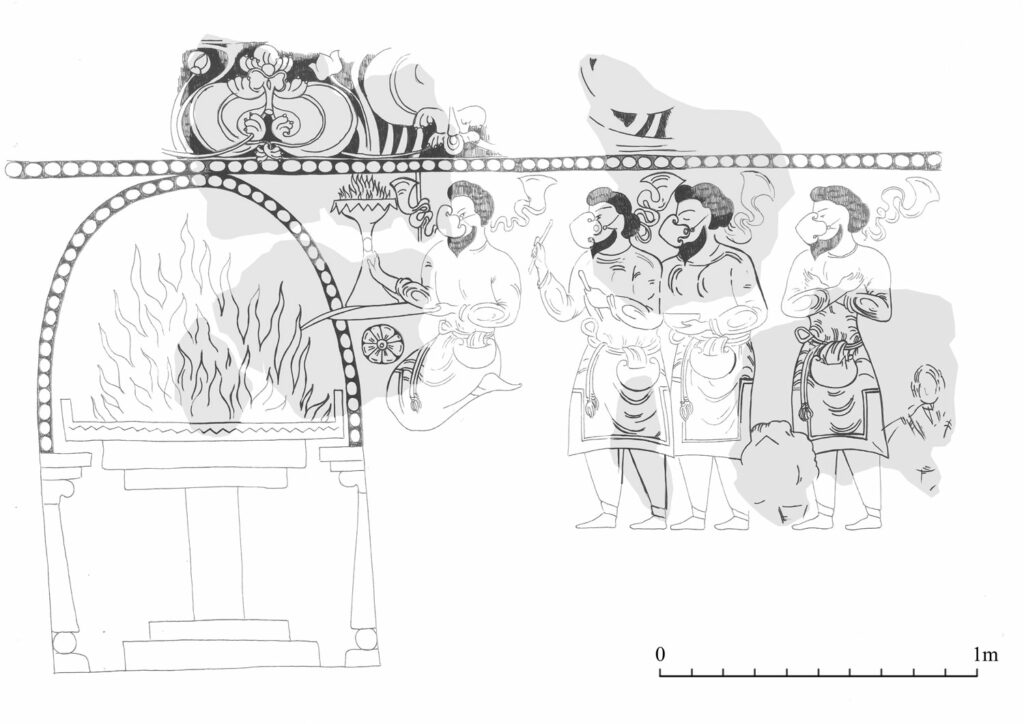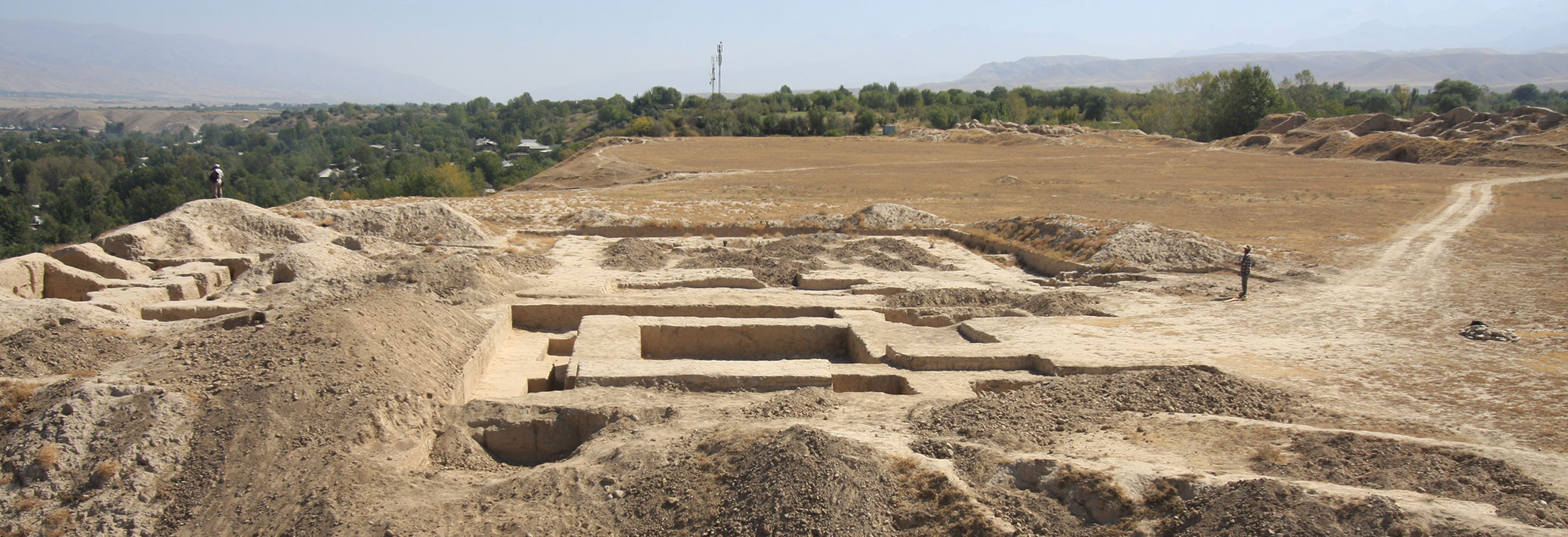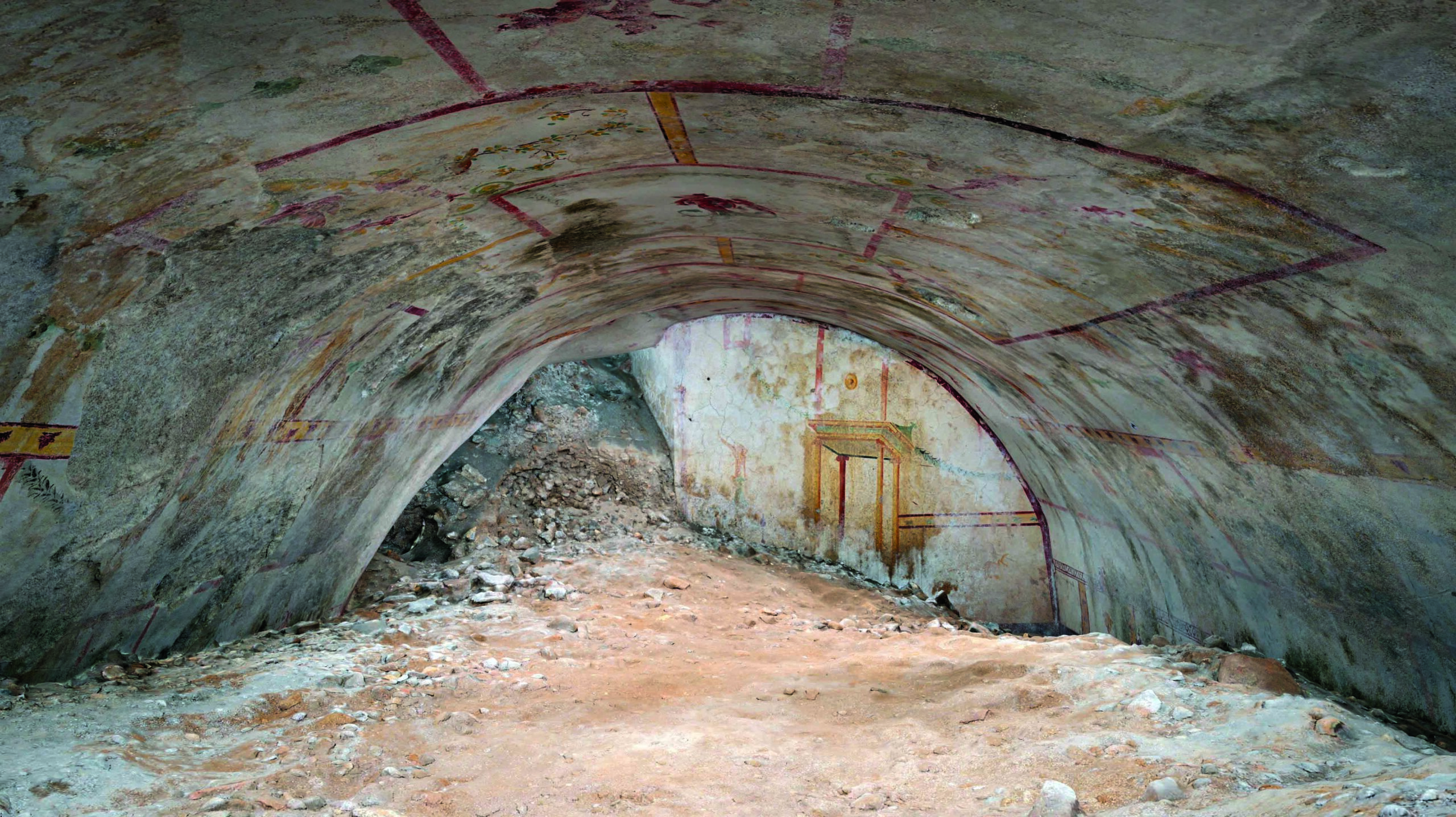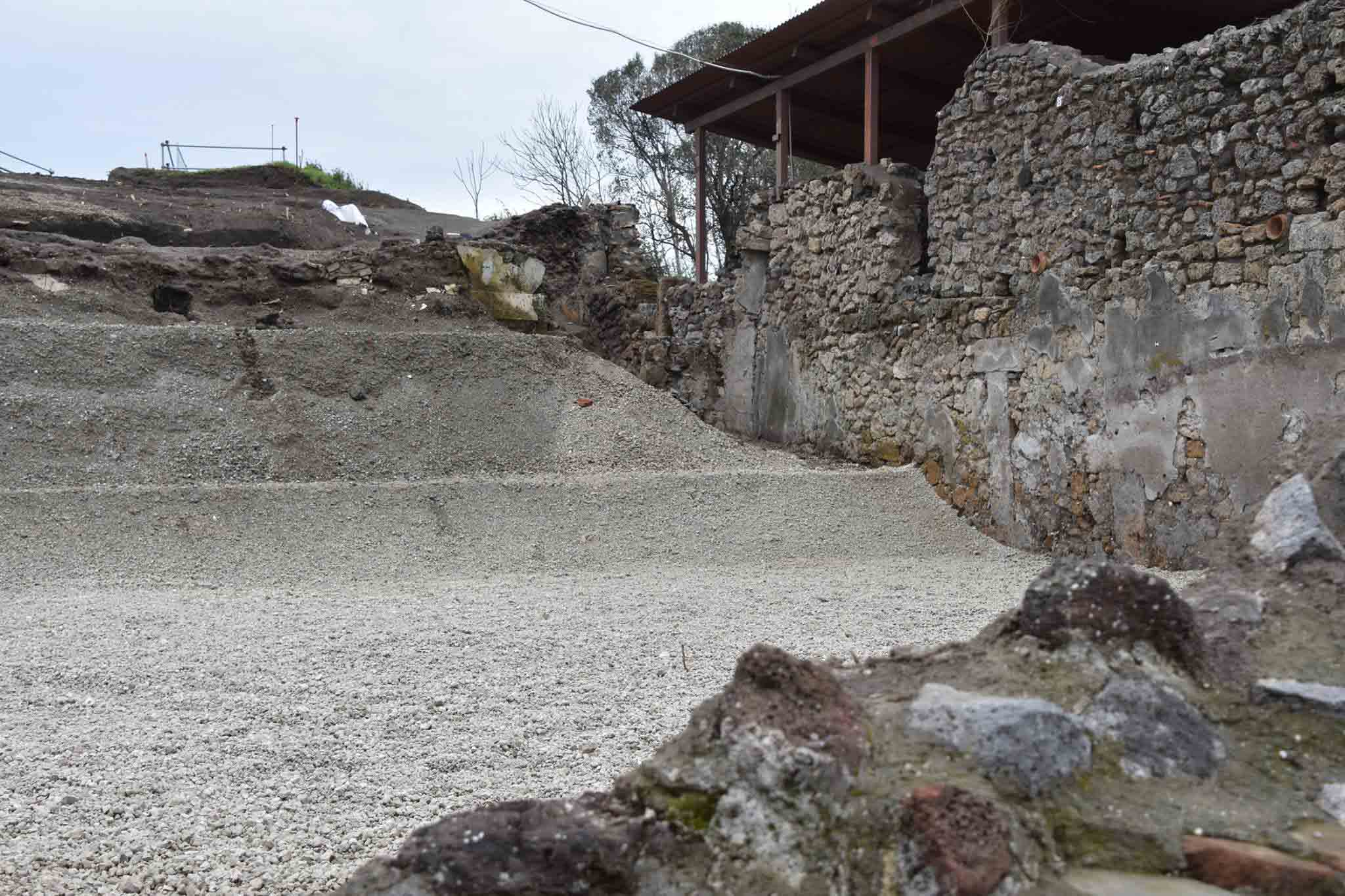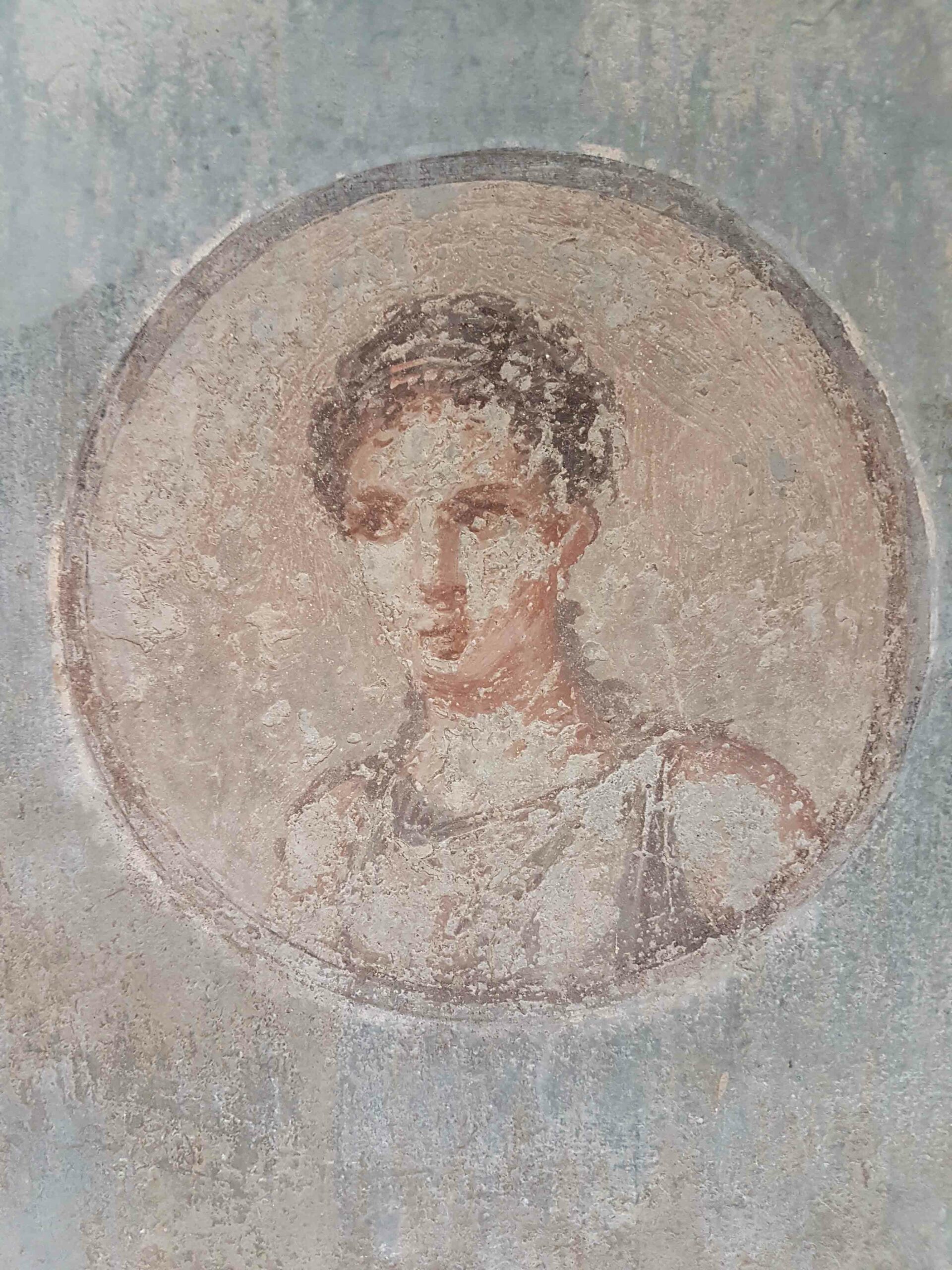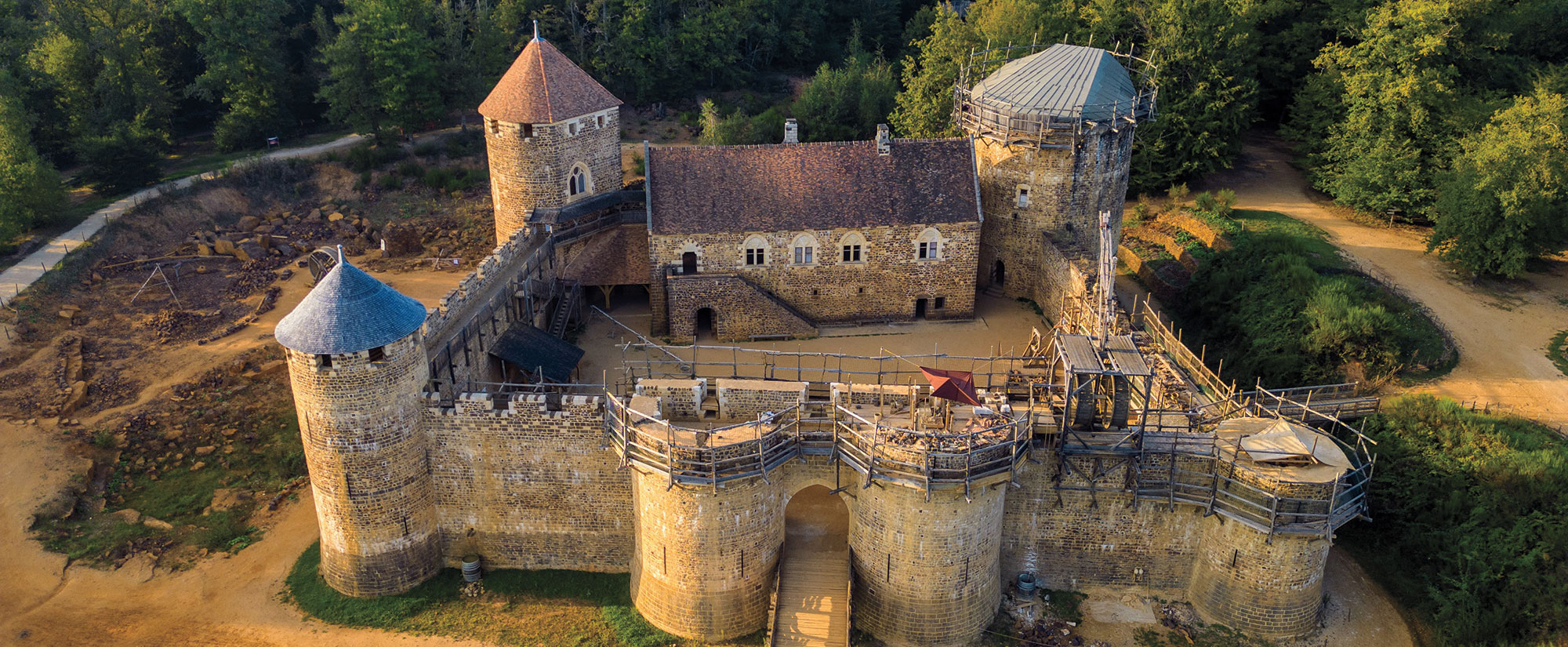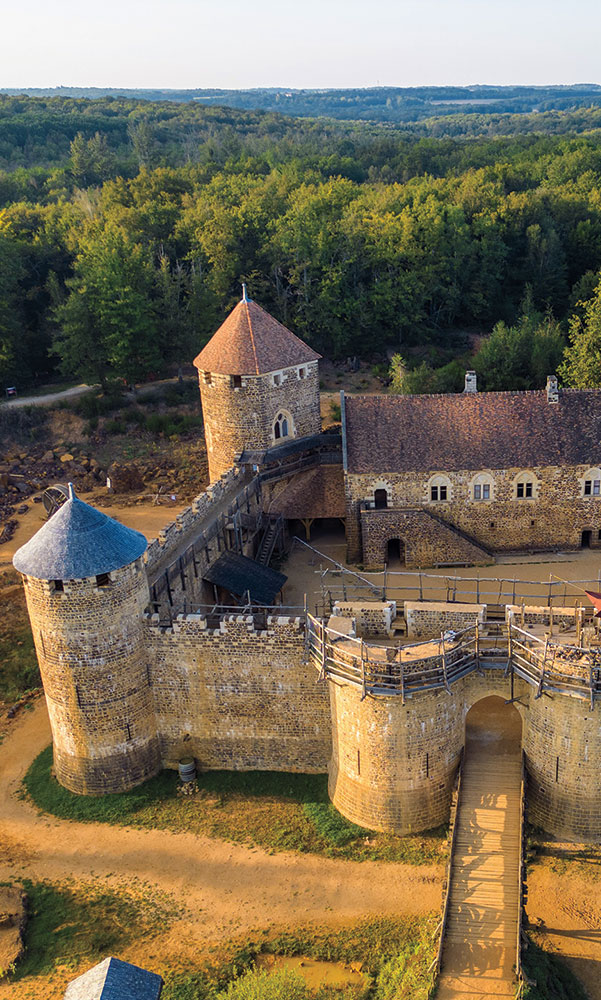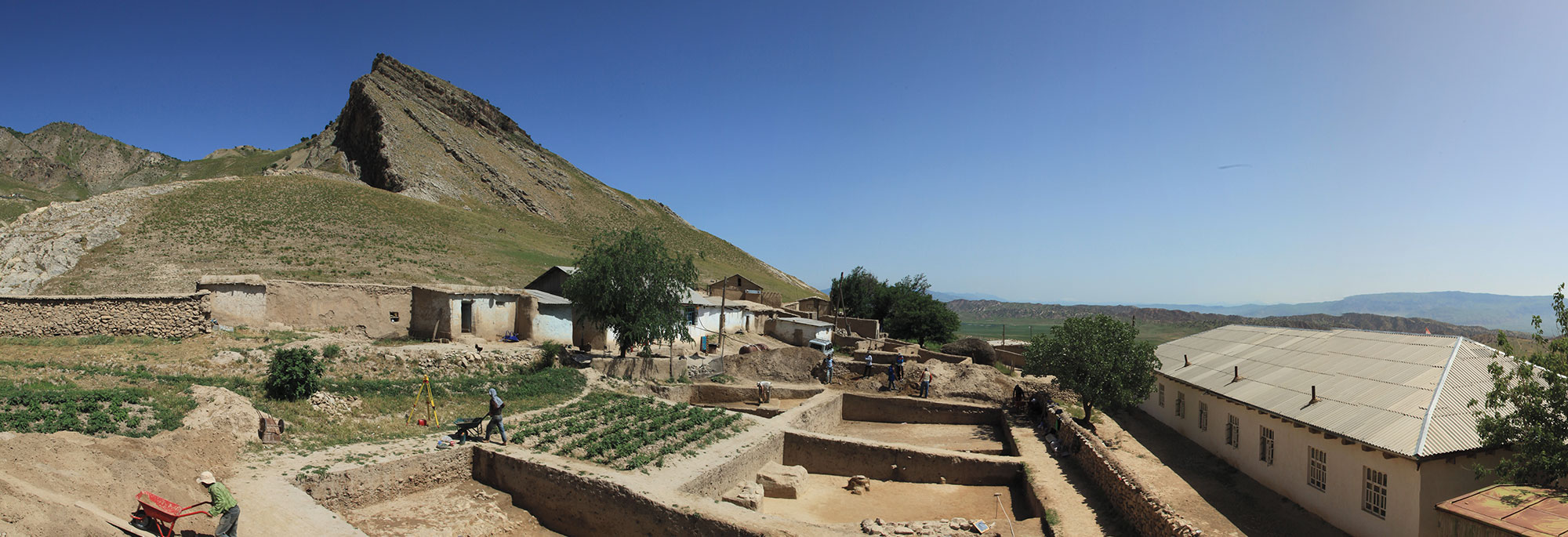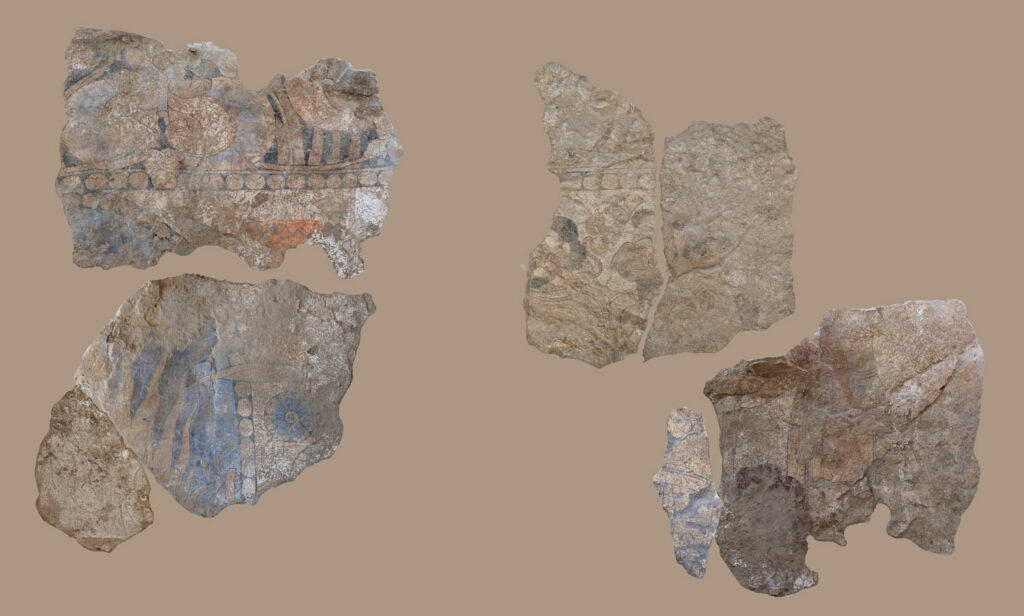
SANJAR-SHAH, TAJIKISTAN—Researchers have painstakingly pieced together fragments from an ancient fresco that is providing an exceedingly rare look at a mysterious Sogdian fire worship ritual, Central Asian LIGHT reports. Sections of the colorful wall painting were uncovered in the Royal Palace at Sanjar-Shah, a Sogdian site near the merchant city of Panjakent. The Sogdians were an Iranian civilization that flourished from the fifth through eighth centuries a.d. and played an instrumental role in commerce and cultural exchange along the Silk Road. The painting seems to depict a procession of four priests, and possibly a child, approaching a sacred arch and monumental altar, atop which burns a blazing fire. The leading priest kneels and raises a portable incense burner toward the altar. Similar scenes have previously been identified on ossuaries, but never before on a fresco. The restored painting has revealed formerly unknown aspects of the Sogdian ceremony, including facets of the priests’ appearance. They are depicted with short hair, beards, and long belted robes with pouches. They are also shown wearing a padam, a type of ritual mouth and nose covering similar to ones still used by Zoroastrian priests today to prevent impurities from reaching the sacred flame. Read the original scholarly article about this research in Antiquity. To read about excavations at Panjakent, go to "A Silk Road Renaissance."
